Eusebio, Even the Stones will Remember you Forever
especiales
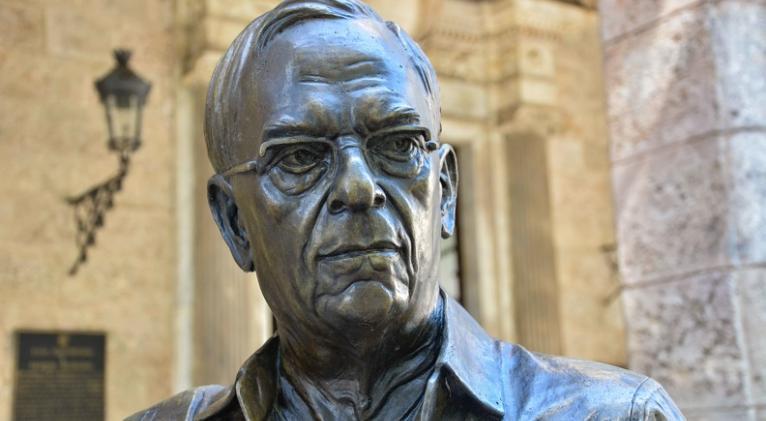
Under the dedicated personal efforts of Leal Spengler for several decades and the community he forged around him, even beyond his own physical presence, the old city came to life.
A statue of him immortalizes him on the wooden street in front of the Palace of the Captains-General, now the City Museum, on whose grounds he was seen daily for several decades carrying out his enormous work to rescue Havana's Historic Center.
The bronze silhouette of Eusebio Leal Spengler brings him closer to the present day, five years after his death in this, his hometown, on Friday, July 31, 2020. It portrays him as if he were still walking the surrounding streets to observe in situ and touch with his own hands each of the restoration projects he led.
Dressed in gray, his shoes always polished, he wandered everywhere, always in a hurry, trying to save time. However, such haste did not prevent him from greeting, stopping, and interacting with acquaintances and strangers, with an emphasis on the surrounding population, which he managed to reclaim as a highly populated historic town, another ingredient that made Old Havana even more attractive.
There, he received kings and princesses, the highest authorities of the Vatican, presidents of several nations from both hemispheres, and other figures from politics and arts. Hollywood stars also learned through him about the values nurtured in that perimeter of the Cuban capital, blessed by its proximity to the sea.
He also paid special attention to the press that covered the restoration efforts of the Historic Center. I was often present at his press conferences and on his walks through Obispo and Mercaderes streets, to mention just two. I also interviewed him in more informal settings and was able to marvel at his wisdom, that erudition that didn't overpower, but rather inspired the soul.
He had many fixed ideas, like a daily log, responding to emergencies as if he knew in advance that he wouldn't have enough time for everything he dreamed of. Despite so he accomplished a lot of tasks. Many good ones, including the general renovation of the National Capitol (1929), which, due to its magnitude, required a great effort on his behalf, even when he was already ill.
But even so, he delivered once again, and on November 16, 2019, on the occasion of the half-millennium of the Villa de San Cristóbal, the building that has since housed the seat of Parliament was masterfully illuminated.
His gift as a master builder far exceeded the limits of the conglomerate of quadrants in the old side of Havana and its adjacent defense system, which together deserved the status of World Heritage Site, granted by UNESCO in December 1982.
For Eusebio Leal, a true revolutionary who lived up to his name, the capital and all of Cuba were the centerpiece of his existence.

Getting to know him closely, talking with him, and, above all, listening to him was a blessing that many were grateful for then and now over the years.
He has remained with us for his effective heritage contribution, his passion, and his boundless dedication, as he was able to sustain himself and keep fighting to heal the wounds of those—his domains—inflicted by the deterioration of the centuries, saltpeter, neglect, and abandonment.
His fiery speech, like that of a competent orator, was heard in diverse forums, both within and outside the country. Some are well remembered, such as his illustrious speeches at the National Assembly of People's Power, in his capacity as a Representative.
A great friend of Fidel, from their initial conversations they identified and united their efforts and support to transform the deplorable state of the Historic Center. Hence the most important buildings were reborn, and at the same time, conditions were created for their inhabitants, who were given new opportunities for life and employment.
An integrative project gained momentum, placing San Cristóbal on the world map. Images such as the Morro Castle, the statue of El Cristo, and plazas like San Francisco de Asís, with doves freely adorning the landscape, attract the interest of travelers. Many are repeat visitors and others who have yet to visit this destination. Currently facing a challenging context due to an economic crisis, primarily due to an intensified US blockade, which is unyielding and seeks to suffocate the island and its people. A closer look.
He became a good man from a very humble background, thanks to the support and teachings of a loving mother, who was very important in his life.
Some describe him as a missionary, and he sometimes called himself a monk. He was the heir to the legacy of Emilio Roig de Leuchsenring (1889-1964), the city's first historian. In 1967, he became the Director of the City Museum, whose colossal renovation was completed in 1979, and from 1981, he was responsible for the restoration of the Historic Center, a titanic task he undertook with the same enthusiasm that drove him as long as he had the strength to continue.
A man who shone as an intellectual, politician, essayist, and researcher, he earned a Doctorate in Historical Sciences from the University of Havana, a title to which he added many others, as well as numerous recognitions and awards. His extensive work includes invaluable literary works, such as "Carlos Manuel de Céspedes, the Lost Diary," an essential reference document ever since.
Seeking to give a more comprehensive picture of the human being, who would have turned 83 on September 11th, I searched my memory, the archives, and social media, from which I gleaned some impressions about him, shared by his son, Javier Leal Estébanez.
He described him as an avid reader, a good draftsman, and a diligent collector, in various fields, including stamp collecting.
As someone more inclined to daytime life, who went to bed early, whenever his social commitments allowed. He wasn't a big eater either, but rather a frequent eater. He preferred, for example, natural fruit juices.
From this source, we also learned that he didn't like to dance, while through his incessant in-depth study, he developed the skills of an eminent antiquarian, as just by looking at any piece of art, he could tell if it was authentic and what era it dated from.
He tried to make sure everything was impeccable. To this end, he worked long hours daily, continuing to do so until the end, when his strength was waning, but not his fighting spirit. His remains rest in the Mother Teresa of Calcutta Garden, at the back of the Minor Basilica of the Convent of San Francisco de Asís.
Announcing his death five years ago, a foreign publication titled its article: "Eusebio Leal, the erudite historian and friend of Fidel Castro who saved Old Havana from collapse, dies." A brief summary of the definition of a man not to be forgotten, given his colossal work, which is impossible to summarize because it was by no means an easy, quick, or expeditious path. But he overcame obstacles of all kinds and rescued buildings that today are museums, headquarters of various institutions, schools, homes, hotels, restaurants, cafes, shops... and brought even the stones to light.
No wonder did the greatness of his soul lead the poet Fina García Marruz to say, "Even the stones will remember him," in a beautiful image worthy of the person who inspired it.
The same stones to which he gave luster, because they once suffered in the darkness of filth and destruction from the fearsome passage of time. He rescued them from the past and brought them renewed to the present.
That's why, Eusebio, even they—the stones—will always remember you, as do all Cubans everywhere.
Translated by Amilkal Labañino / CubaSí Translation Staff



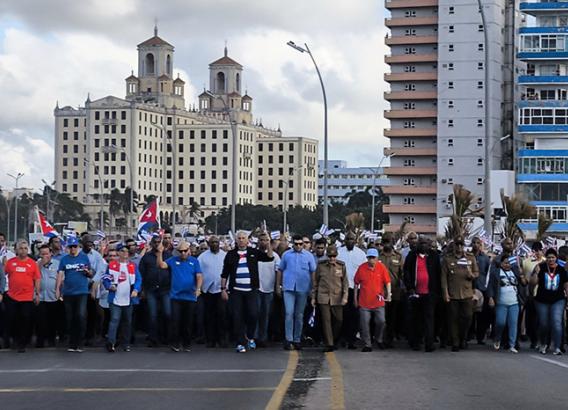
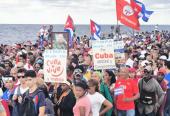
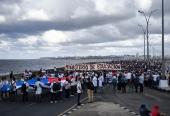



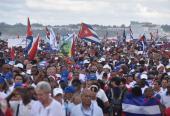




Add new comment